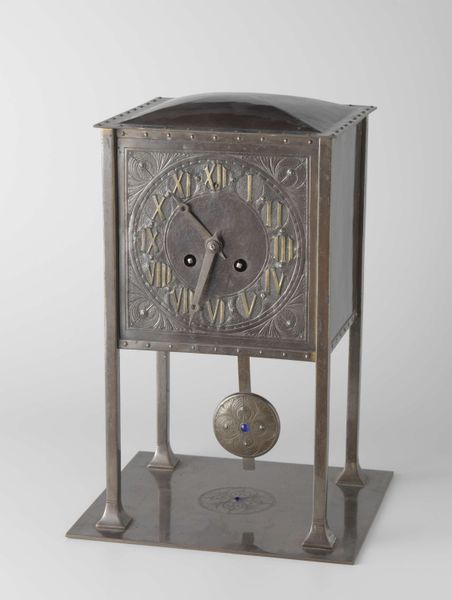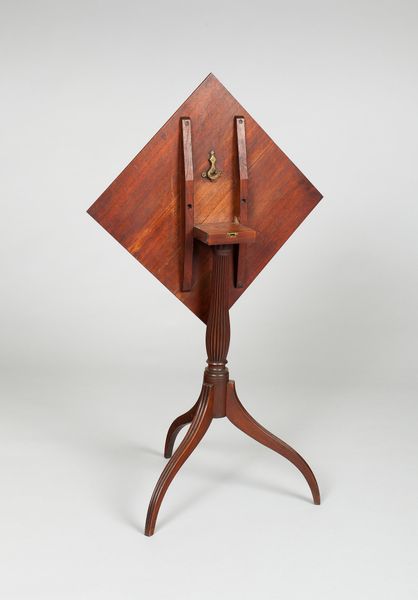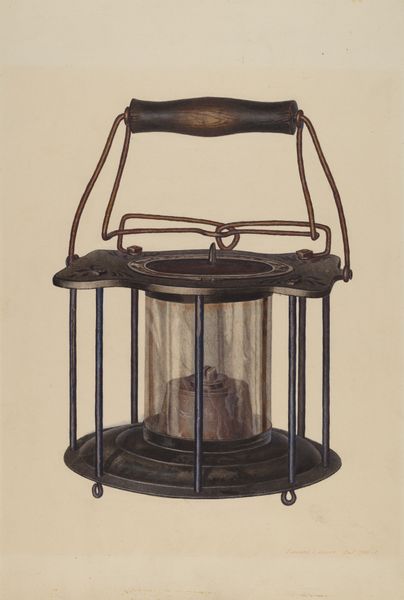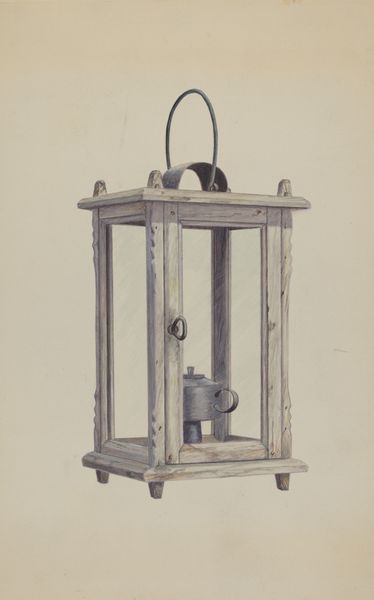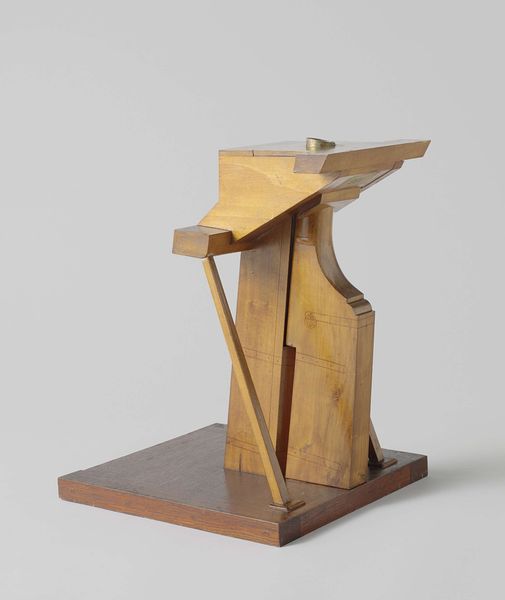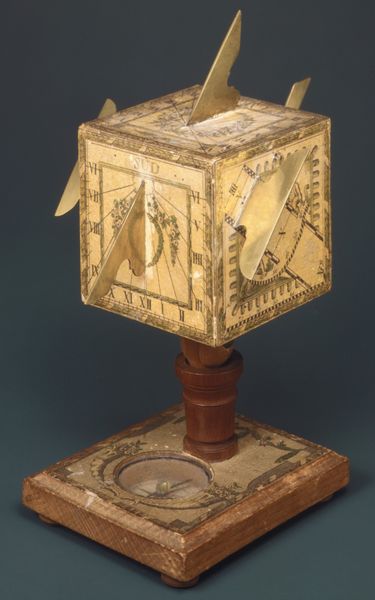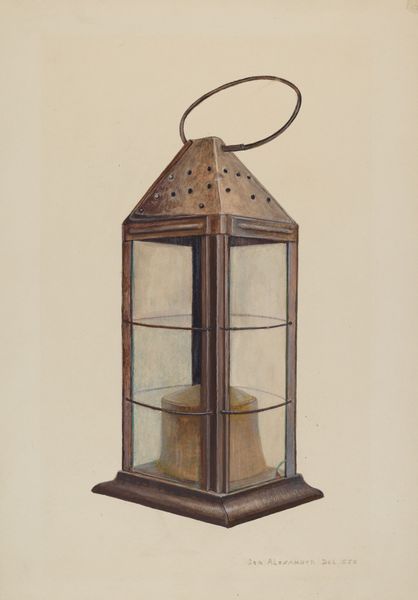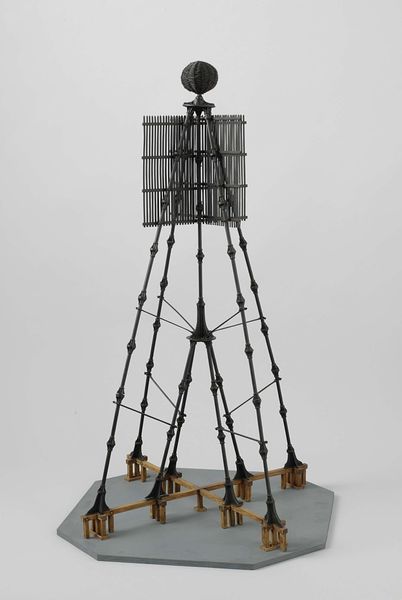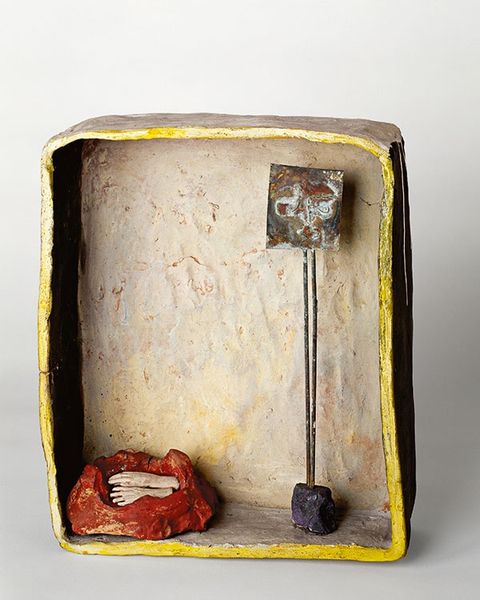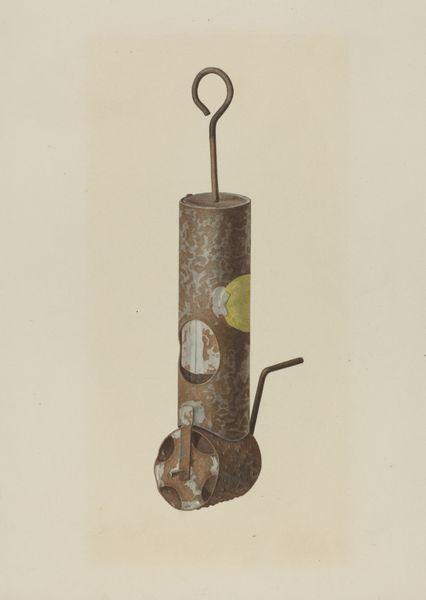
mixed-media, assemblage, found-object, sculpture
#
portrait
#
mixed-media
#
conceptual-art
#
assemblage
#
sculpture
#
found-object
#
sculpture
#
pop-art
Dimensions: overall: 110.49 × 49.53 × 29.21 cm (43 1/2 × 19 1/2 × 11 1/2 in.)
Copyright: National Gallery of Art: CC0 1.0
Curator: Standing before us is Edward Kienholz's "Portrait of Virginia," created in 1963. It's a mixed-media assemblage that presents quite a striking figure. Editor: It certainly does. My first impression is one of… discomfort. The piece feels strangely robotic, but also very vulnerable. The textures and colors are muted and corroded, which suggests decay, or perhaps, the brutal effects of labor on the body. Curator: That's insightful. Kienholz was known for using found objects and incorporating everyday materials into his work. You see this very clearly in “Portrait of Virginia”. The artwork challenges notions of traditional sculpture through materiality; there's an almost utilitarian quality, as though the sculpture has been built with objects that have outgrown their utility, which raises the question of production versus obsolescence. Editor: Exactly. The social context is key here. Think about 1963. The Civil Rights Movement is gaining momentum, there's social upheaval, a looming cold war— this piece echoes that turmoil, but is centered on Virginia, presumably a woman and someone personally known to the artist, imbuing an explicit point-of-view, that must necessarily reflect this fraught context. The mixed-media assemblage evokes questions about the female body, its place within structures of power, and the ways that identity is assembled—much like the piece itself. Curator: The rawness is very intentional. The found materials have their own history and trajectory; they've been worn down, perhaps even discarded before Kienholz has granted them new utility as part of his portrait. One can almost see labor— the work put in to re-purposing material— embedded in the final work. Editor: And to emphasize that labor— consider the female sitter! How labor intersects with gender, class, race in ways that constrain and shape individual identities. It invites viewers to contemplate both the historical and material construction of “Virginia's” portrait as a critical exploration of social and personal identities. Curator: Thinking about these combined layers and different facets of the same object and portrait certainly enhances one’s engagement with this singular artwork. Editor: Absolutely, Kienholz uses materiality to invite us to consider broader sociopolitical themes related to subjectivity in ways that open dialogue and reveal the social contexts from which both the work and the subject emerge.
Comments
No comments
Be the first to comment and join the conversation on the ultimate creative platform.
